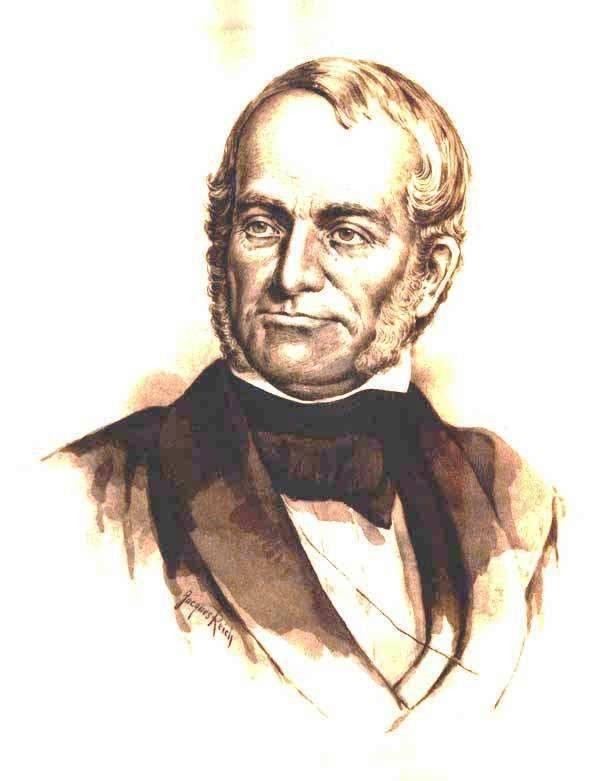THE ABOLITIONISTS: PBS Documentary Begins Tuesday Night
January 6, 2013
By: Dave Rogers
 James G. Birney's ideas finally came to fruition when Abraham Lincoln was elected as a Republican in 1860, thus sparking the Civil War.
James G. Birney's ideas finally came to fruition when Abraham Lincoln was elected as a Republican in 1860, thus sparking the Civil War.
Abolitionist allies Frederick Douglass, William Lloyd Garrison, Harriet Beecher Stowe, John Brown and Angelina Grimké turned a despised fringe movement against chattel slavery into a force that literally changed the nation.
American Experience: The Abolitionists -- January 8, 15 & 22 on PBS.
The political leader of abolition, James G. Birney, pioneer Bay Cityan, mentioned only briefly in "The Abolitionists," is featured prominently other documentaries, "A House Divided" and "The Time of the Lincolns."
A book recently published by Michigan State University Press "Apostles of Equality: The Birneys, the Republicans and the Civil War," contends that Birney was the most important figure in the abolition movement, following the concept "we must vote them down" first posed by early abolitionist Benjamin Lundy.
Birney's ideas finally came to fruition when Abraham Lincoln was elected as a Republican in 1860, thus sparking the Civil War.
"Apostles" notes that Garrison, who has received the most credit for ending slavery, urged the North to secede and abolitionists not to vote. Brown, of course, was a terrorist and murderer who may have caused the movement more strife than any other activist.
Frederick Douglass joined Birney's Liberty Party, Harriet Beecher Stowe was inspired by Birney to write "Uncle Tom's Cabin" and Birney collaborated with Angelina Grimke and her husband Rev. Theodore Weld on an influential 1839 book, "American Slavery As It Is."
"The PBS promotion of "The Time of the Lincolns" states: "Some Americans had opposed slavery since colonial times. In 1777, Vermont was the first U.S. territory to ban slavery, and the state of Pennsylvania followed suit in 1780.
"By 1804, Northern states had voted to abolish slavery within their borders. In the half century leading up to the Civil War, white and black activists, women and men worked together under the abolitionist umbrella, though not always in harmony.
"Abolitionists put forward a wide range of approaches to end slavery, from moral persuasion to boycotts to the endorsement of violent rebellion. Read profiles of three of the movement's prominent activists."
Birney's PBS profile follows: "James Gillespie Birney National Archives James Gillespie Birney believed that political action and the power of religion were the keys to ending slavery.
"Born in Kentucky to a slave-holding family, he freed his slaves and went on to become one of the nation's most prominent abolitionists. As a legislator in Alabama, Birney proposed measures that would allow the legislature to emancipate slaves and prohibit selling slaves brought into the state.
"Driven from the South after trying to set up an abolitionist newspaper, he moved North, where he was elected executive secretary of the American Anti-Slavery Society.
"Birney's ideas about achieving abolition using political means and moral suasion caused friction with William Lloyd Garrison, who encouraged his followers to boycott politics and adopted an anti-clerical position.
"In 1840, Birney joined those who left Garrison's group to form the Liberty Party. Birney was the party's presidential nominee in 1840 and 1844. Although he was not elected, Birney received more than 60,000 votes in his second run.
"He continued his anti-slavery campaign, serving as vice president of the World Anti-Slavery Convention and writing a book entitled The American Churches the Bulwarks of American Slavery. Birney died in 1857."
PBS also comments: "The Liberty Party was the political outgrowth of the growing anti-slavery movement. It had been born in 1839, when the movement factionalized into conservative and radical parts.
"The radicals followed William Lloyd Garrison, who demanded the immediate ending of slavery, denounced the U.S. Constitution, and allowed female activists into the movement.
The conservatives formed the Liberty Party and sought to end slavery gradually through traditional, political channels.